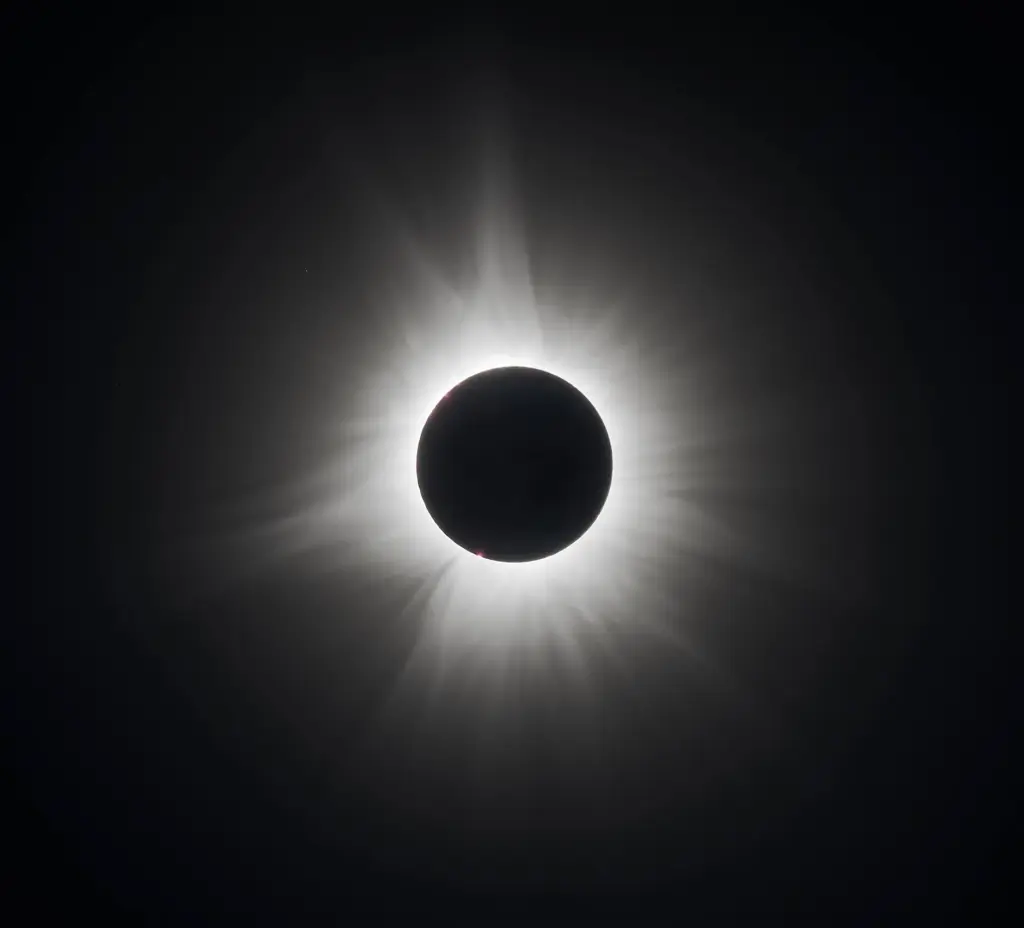

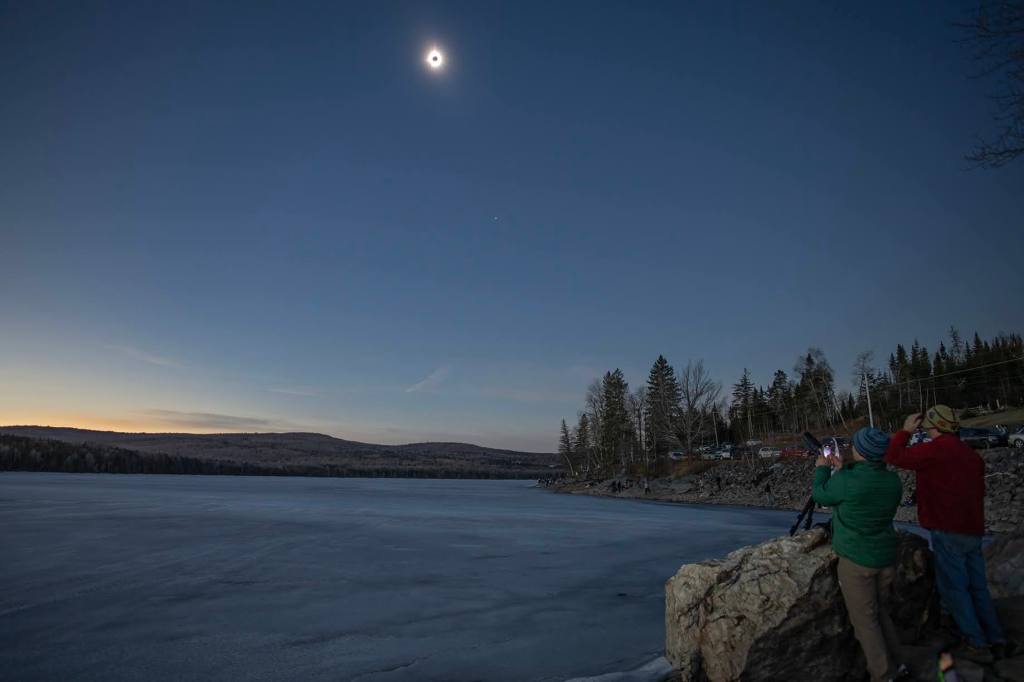
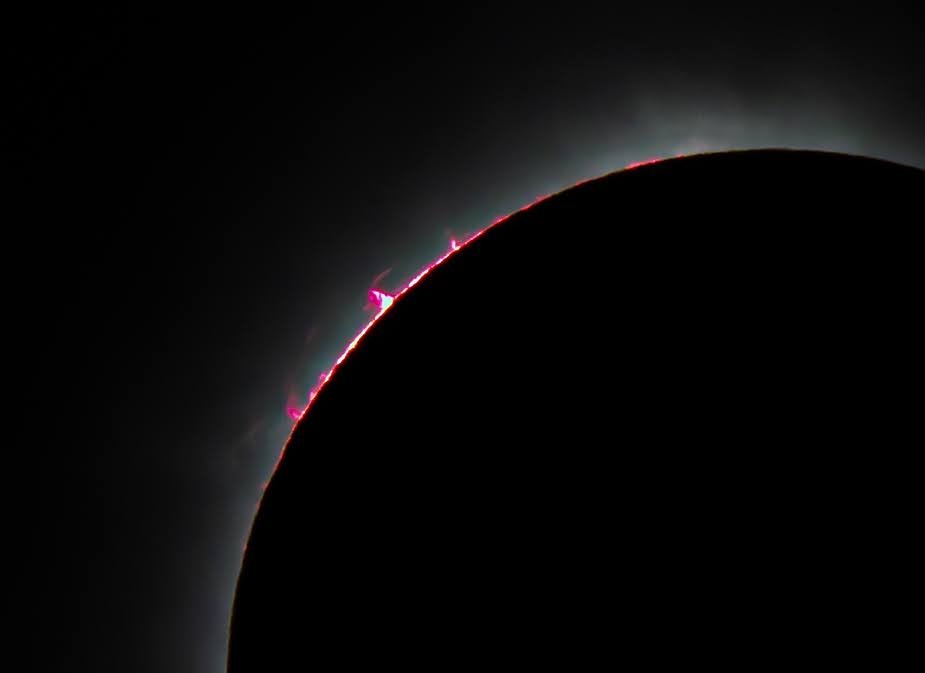
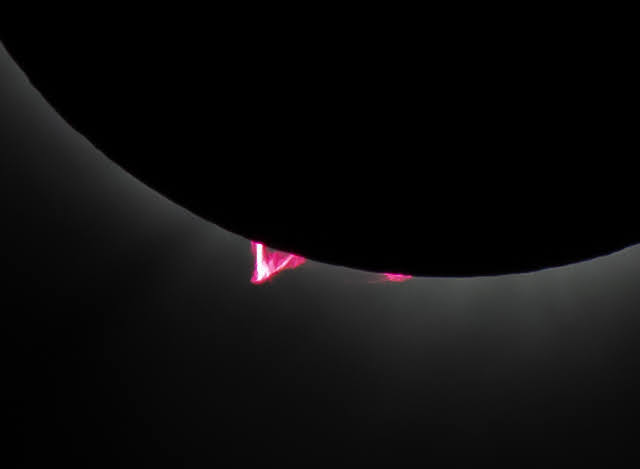
All images taken from Pittsburg, NH, USA along the shore of Lake Francis. The closeup images were made using Nikon D850 and 500mm focal length lens. The wide field frame is from a Nikon D6 and 20mm wide field lens. All photos by J.A.Blackwell.






All images taken from Pittsburg, NH, USA along the shore of Lake Francis. The closeup images were made using Nikon D850 and 500mm focal length lens. The wide field frame is from a Nikon D6 and 20mm wide field lens. All photos by J.A.Blackwell.
There are a lot of sites out there to help you get going with eclipse planning this time around. This will give you a lot of links and go-to sites for that information. Happy eclipse viewing!

Planning: at this time, getting to and from remote locations is going to be challenging at best. Most flights around the eclipse date are filled. Hotels are also booked. If you are within driving range, be very aware that your drive times will be greatly increased traffic congestion. Our experience has been that getting to a site one or two days early is the easy part if you drive in. Driving out is next to impossible: again, wait a day or two to leave. People will try to part anywhere they can, from shopping center lots to the side of the highway. Be safe. Be kind to people. Crowds are challenging.
Not eclipses are total. Many are partial, and some are annular. An annular eclipse takes place when the angular size of the Moon in the sky is smaller than the angular size of the Sun in the sky. What makes this happen? Distances! The further away something is from your vantage point, the smaller is appears. During the eclipse of 14 October 2023, the Moon is close to its apogee, its furthest distance away from Earth in its orbit (remember that the Moon’s orbit is significantly elliptical). During an annular eclipse, if you are on the eclipse path, you will see the smaller Moon cover the Sun, but not completely. A small thin ring of the Sun will still be visible around the edge of the Moon. Be very careful! Annular eclipses are NOT safe to look at without proper solar filters or instrumentation!
More on the safe observing practices here: Annular Eclipse Safety
The path of maximum eclipse passes from Texas through to the Pacific Northwest on this occasion. Others across the Americas will see a partial eclipse, an equally exciting opportunity. The chart below (NASA) shows the path.
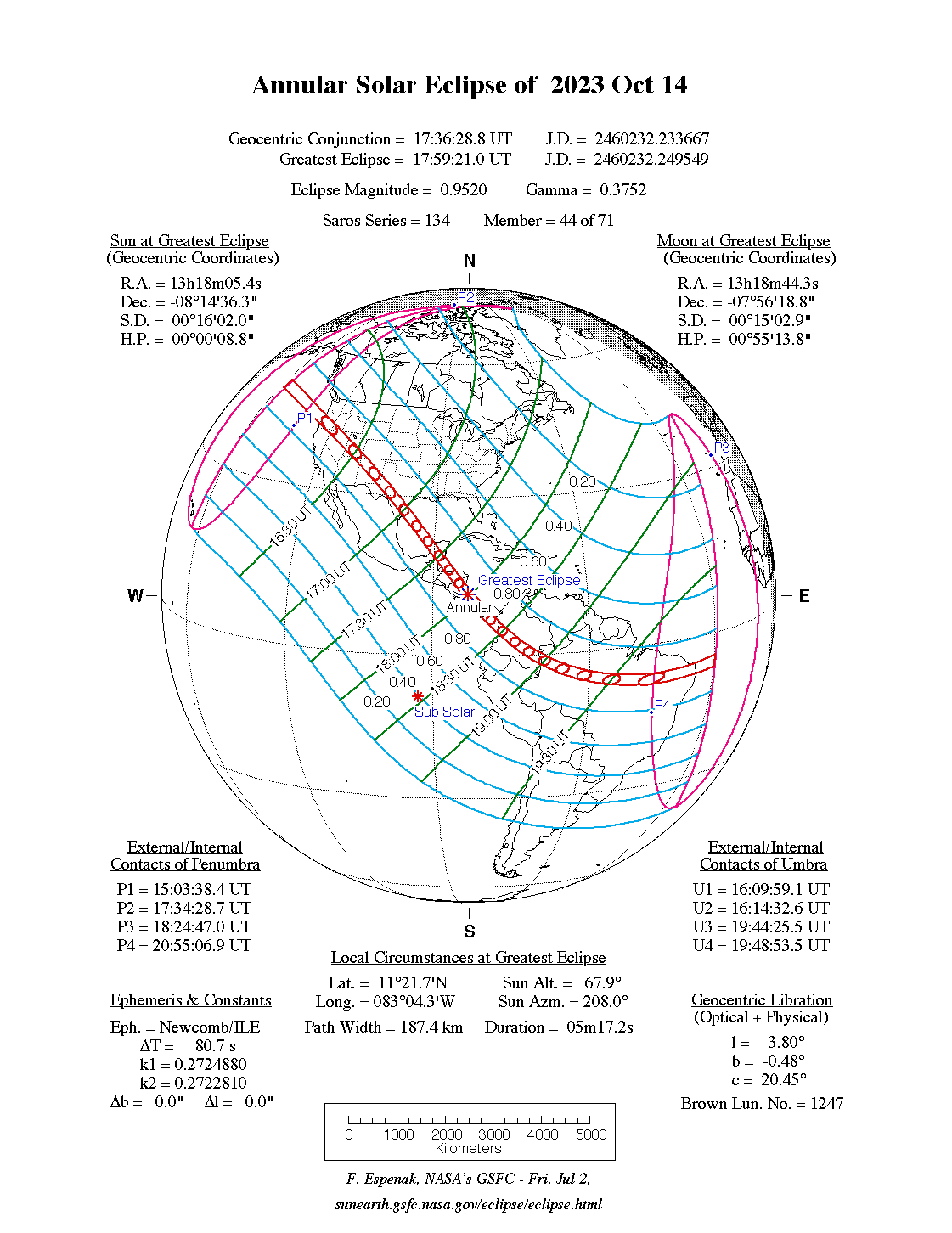
A reminder: Observe safely. Even when this eclipse is in full annular mode, it is not safe to look at. It is also not safe to aim your camera at for any length of time, as your lens system could suffer damage, as could the sensor and shutter mechanism. Use proper filters!
When to see it? This website will help you plan your observing schedule with its interactive map. https://science.nasa.gov/eclipses/future-eclipses/eclipse-2023/where-when/
Safe and Happy Observing!
As school gets out in early June, the time to start the maintenance routing begins. This all needs to get done before the Exeter Summer Session, a six week program that runs all of July and into the first two weeks of August. Checklist of To-Do items:
This last year we replaced the rubber matting that seals the dome-to-structure interface, covering the rollers and the opening to the outside world. The original covering was thirty years old! The new material is a smooth surface and not porous like the previous covering. This makes for easier wet cleaning and faster drying.
The results? Clean operational status!
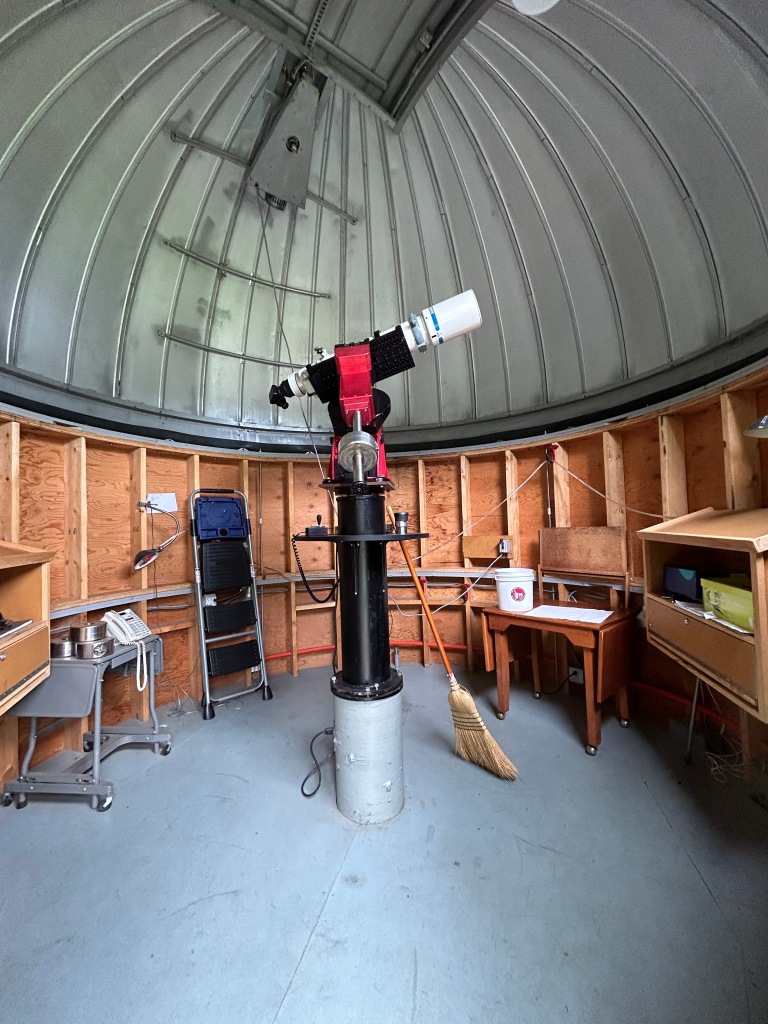

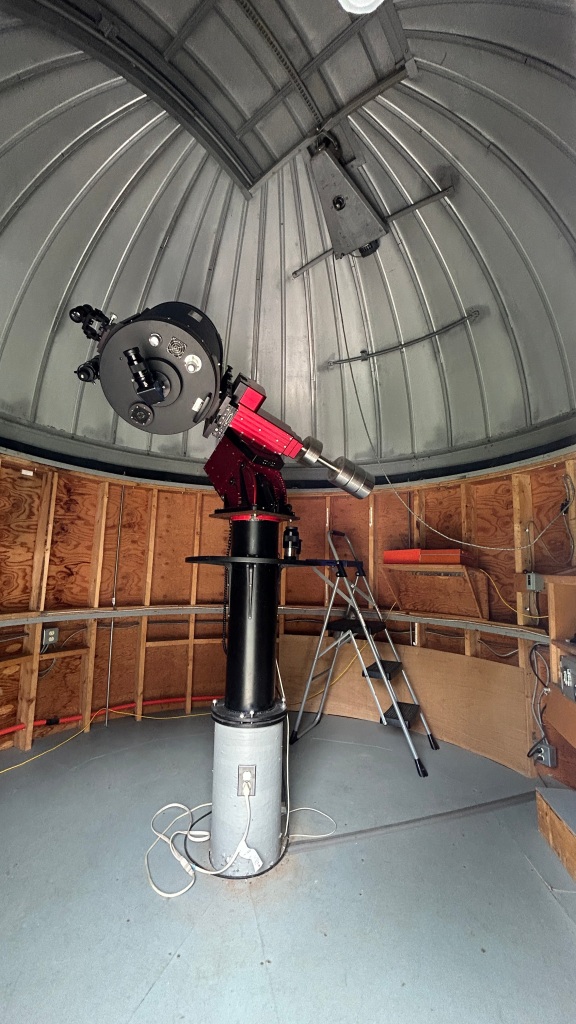
Advanced astronomy classes this spring had the opportunity to hone their skills at image data extraction and analysis with a telescope we have been operating in the southern hemisphere. This spring, a classical nova erupted, reaching V magnitude ~ 6.7 or so before fading. We collected data every clear night in photometric filters, V, B and R for analysis and submission to the AAVSO. When done, students had correctly analyzed 176 data points and submitted those as observer GPE (Grainger Phillips Exeter), our AAVSO initials. Below is a plot of the V, B and R data from the AAVSO which includes our data and those from all the other observers who took part in observing this star.
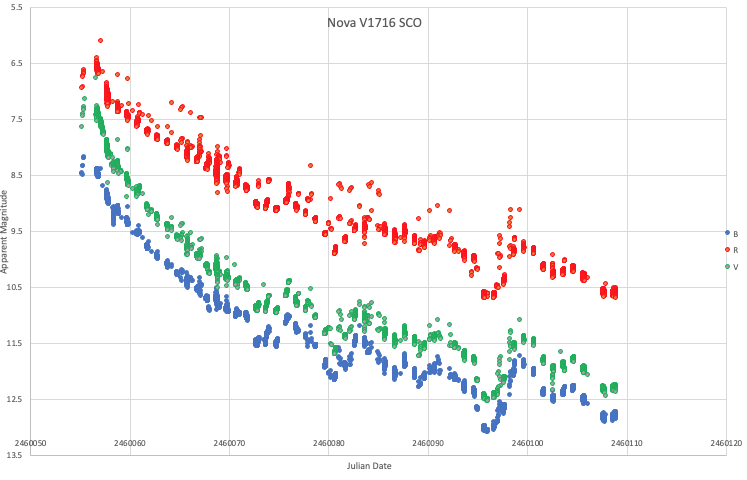
Apparent magnitudes in V, B and R are on the ordinate. Julian Date is on the abscissa. The colors denote filters used: Red = R, Green = V, and Blue = B photometric filters. We acknowledge with thanks the variable star observations from the AAVSO International Database contributed by observers worldwide and used in this research.
This May we were in a fortunate situation: clear skies and a new supernova to observe. The advanced astronomy classes had the opportunity to reduce and analyze the data and feed their results to the AAVSO. Below is a 300 second lum-filter integration of the region of SN 2023ixf in Messier 101. At peak, this object reached an astounding magnitude in V ~ 10.8

Messier 101, the Pinwheel Galaxy, and the supernova are 20.9 million light-years distant. The supernova was confirmed as a Type II meaning it was once a very massive star which, at the end of its “life cycle” had expanded into a red supergiant and imploded resulting in the explosion phenomena you see here.
The news is, of course, old to those who have been following the Sun’s activity of late: things are getting more exciting. There are more spots, more flares and more CMEs as we approach solar maximum. Solar Cycle 25 is off to a good start, and interestingly, there are websites which post that it will be weaker than 24… while others show that it will be more active. Official news can be found here: https://spaceweatherarchive.com/2022/01/09/solar-cycle-25-update/
Right now the sunspot counts are higher than the predictions for the cycle. Read into that as you will, as solar physics is still a burgeoning field. The current prediction is for the cycle to reach maximum in mid-2025. With that amateur radio enthusiasts and astronomers will enjoy the changes to the Sun and ionosphere. With the activity, changes to our solar observing practices have been made, so that it can be shared safely with students & adults, and the data collected to send to the AAVSO Solar Group. While all but the 0.7m have solar filters, the results of using a Herschel wedge from Baader along with a 10mm Radian and polarizer on a TV-85 have been amazing. It’s small, light weight, easily transported and will also hold a Nikon D-810 for imaging. Attached are a couple of photos from earlier this week, all taken in gusty wind conditions. Note that if you are intending to get new solar observing gear, the lead times on ordering gear are now long… and solar maximum is coming. Images are below: be sure to click to see full size. The spots are impressive!
Clear skies to all.


With this winter term’s Selected Topics in Astronomy class, we chose to give the new 0.7m telescope a workout and see if it could produce results fine enough to detect extrasolar planets using the transit method. The transit method focuses on the slight apparent brightness changes in a star when one of its planets orbits in front of it from our viewpoint here on Earth. Many planets have been discovered this way: The Kepler Mission has over 2800 candidates and 2600 confirmed. The TESS mission has over 2600 candidates and 122 confirmed exoplanet discoveries. So, where to start?
We chose a well-known exoplanet, visible to us in the northern hemisphere, with a predicted brightness change that should be readily visible to our equipment. The predicted transit times needed to be well established and had to start and end during nighttime, so that we could detect the entire transit event. WASP-43b became the primary target. It has a 0.81 day orbit (FAST!) and is a large planet orbiting a small diameter star (spectral type K7 V), making for large changes in brightness. All we needed was a clear night when one of its transits was taking place. Using the Swarthmore exoplanet transit search site (https://astro.swarthmore.edu/transits/transits.cgi) we found a perfectly good transit opportunity on the night of 26 January. The goal was to start photometric observation an hour before the transit started, observe through the entire transit, then end an hour after the event. The goal was achieved!

Images were taken in rapid cadence, one minute integrations each, through an Rc filter to minimize the Earth’s atmospheric effects.
The image above shows the results of the data capture: two plots. The upper plot shows the magnitude of WASP-43 changing through the transit period in J-C Rc magnitudes. X: Time in J.D. Y: Rc observed magnitudes. The bottom plot is of a check star used to validate the data set. We used reference and check star Rc magnitudes from the AAVSO for this study. Note the error bars are small: these represent systemic errors in the measurements based on signal-to-noise values of the individual images. The variances in magnitudes, which are on the order of 0.010 mag, are caused by atmospheric changes and seeing conditions. Exeter, NH is very close to sea level, so we have a lot of air mass to observe through. With these conditions the dip of about 0.040 magnitude in WASP-43’s brightness was easily seen: a success!
This is also an indicator of the observatory’s capabilities. We now know that a typical winter observing run can expect 0.010 magnitude fluctuations in seeing conditions and that a star with m=12, we can expect an excellent signal-to-noise ratio. What’s next? To work on assisting scientists with solidifying the orbital periods of other less known exoplanet systems.
From NH this was a partial eclipse, but we had good weather and the opportunity to watch the sunrise with the eclipse already in progress. The choice location was one of many spots along the NH seacoast. We chose North Beach in Hampton which had easy to reach parking and plenty of locations to settle a tripod, telescope and camera.
Brought to the event was a Questar 3.5″ telescope with full aperture solar filter for visual use and a Nikon D810, 500mm telephoto and full aperture solar filter for video and images.
We arrived just after 4:15am EDT: nobody was there! Just us, the stars and the eerie red glow to the northeast. Jupiter and Saturn gave us wonderful pre-sunrise views through the telescope as we waited for the sun to get above the horizon. People started to arrive at about 5:00am. By 5:15am the lot was full. Clouds? Oh yes, there were clouds throughout the entire event, but we still had great chances to see and photograph the event. Here are some to enjoy:
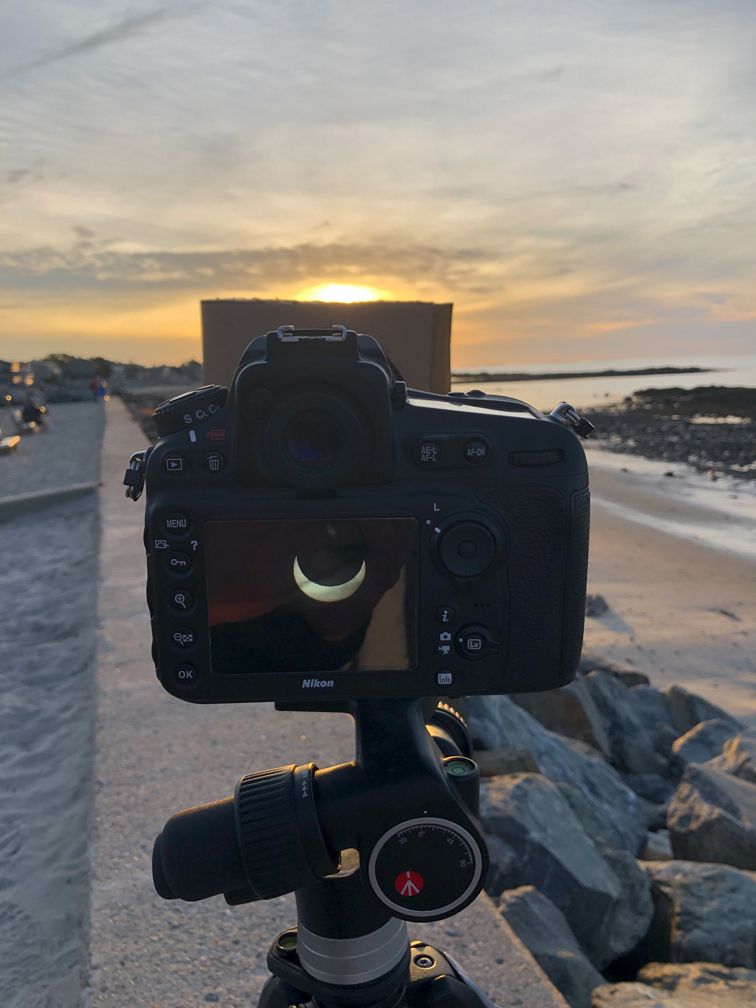
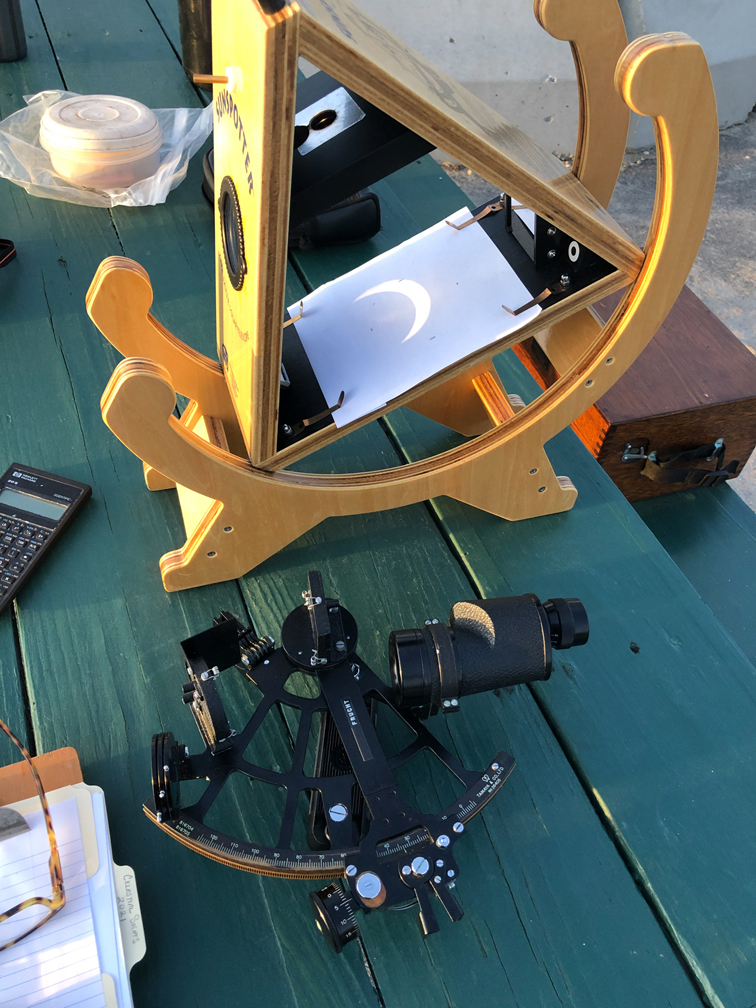
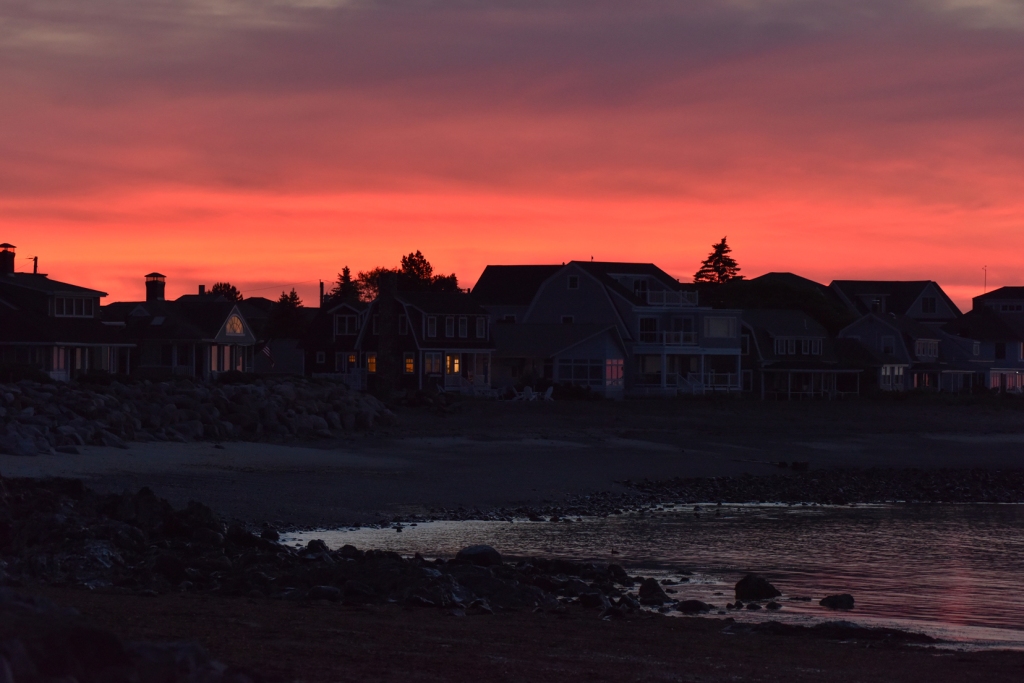
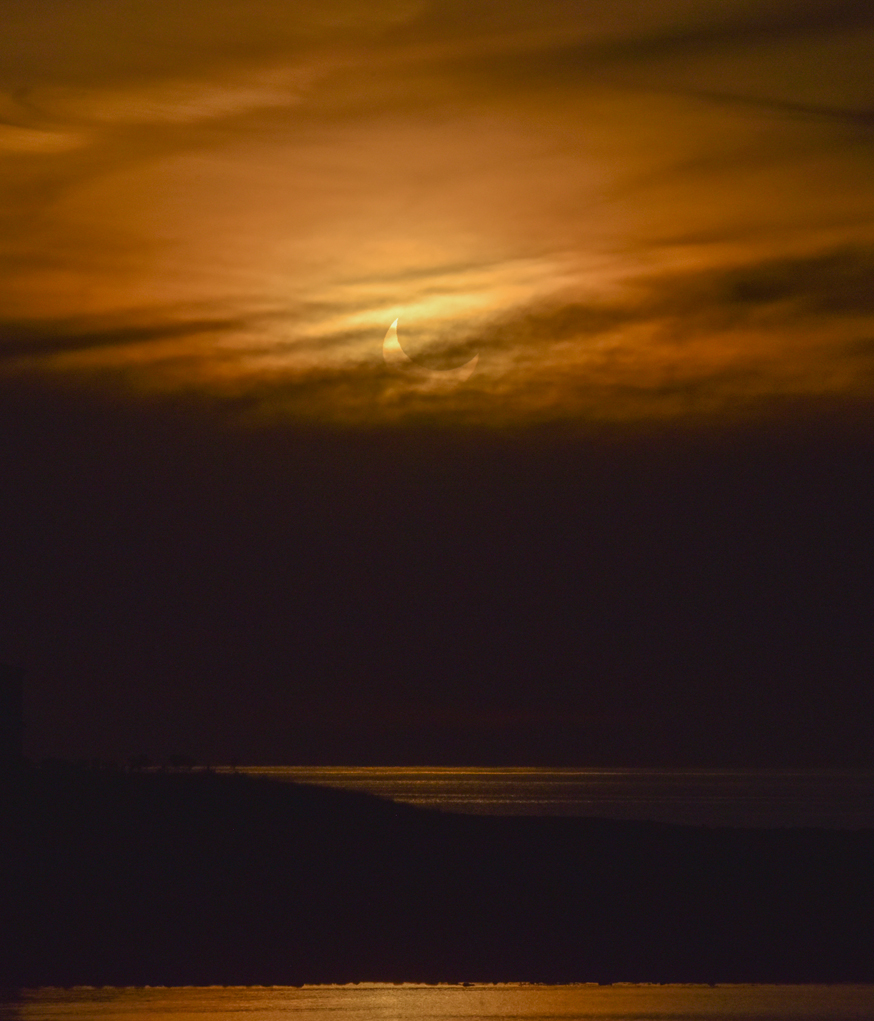
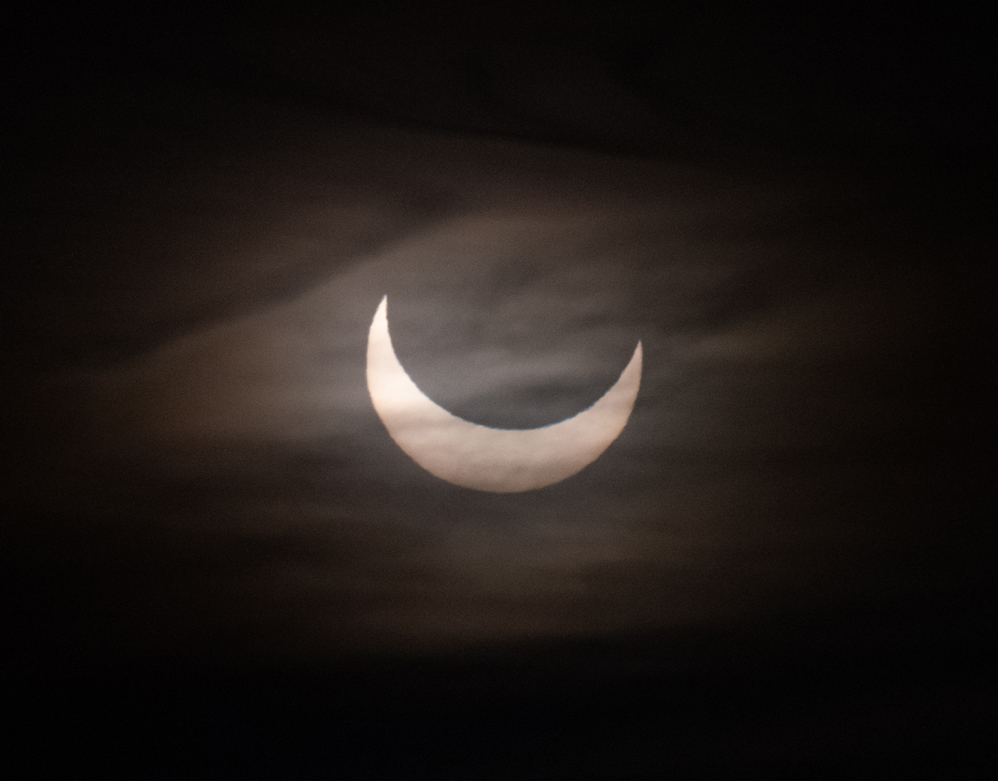
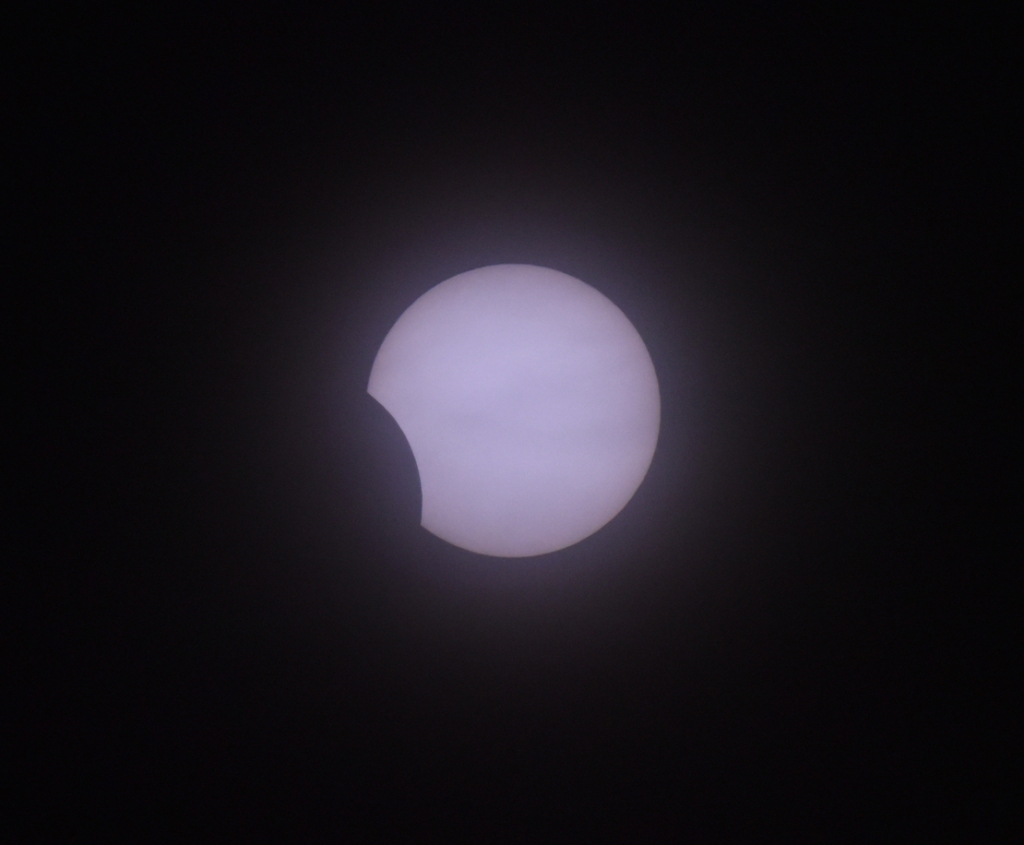
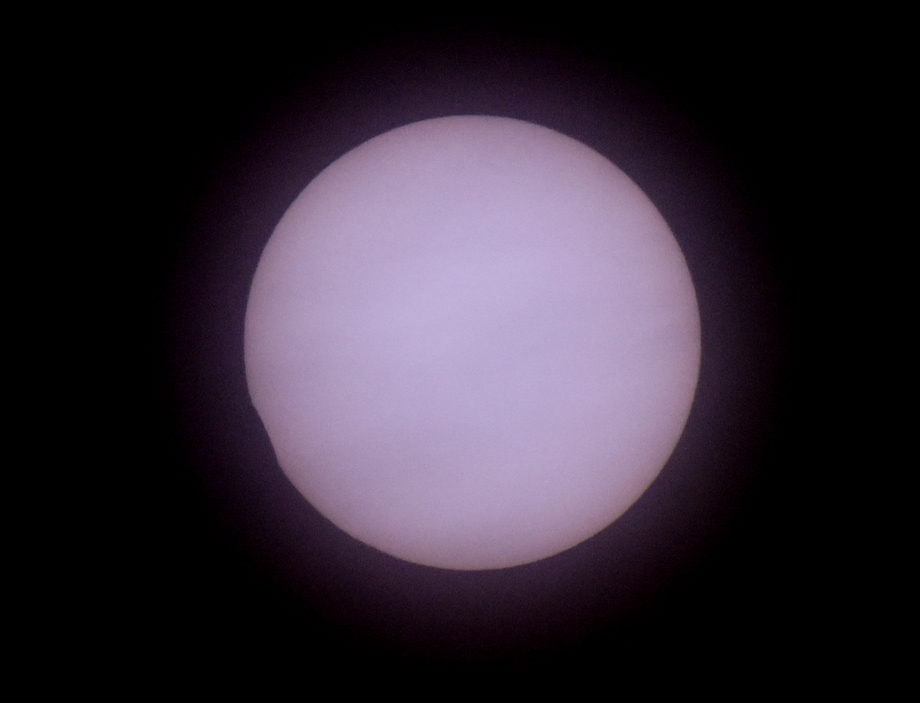
The Orion nebula, also known as Messier 42 (M-42), is one of the most splendid winter deep sky targets for amateur astronomers. It can be seen as a faint fuzzy patch for those of us with excellent vision, just below the three belt stars of the constellation Orion.
In binoculars this patch of light shows some sweeping details and groups of stars surrounding the area. Through a modest telescope, the details do start to pop out, and if using a telescope of 16 or more inches in diameter, you will start to get hints of greenish color when viewing through an eyepiece. Unfortunately, the human eye is not the most sensitive to the red light that excited Hydrogen gas gives off (656.3nm), and the Orion Nebula outs out a lot of its light at this wavelength. As a bright nebula, it has become a favorite target for budding astrophotographers: even a small telescope and short exposures of a minute or so will show some very satisfying detail. Here is a color image of M-42 taken with the school’s Takahashi FC-125, a 125mm (5″) diameter refractor. The camera was a Nikon D-810a DSLR, their version of the D-810 but without their IR blocking filter. This allows a much higher sensitivity to the Hydrogen emission lines at 656.3nm. The “a” means astronomy in Nikon lingo. This image is constructed with three separate 60 second exposures, cleaned up by removing bias, dark and flat fields, then merged together to show the bright inner details along with the fainter outer regions of the nebulosity.
The nebula itself is some 1344 light-years from our Solar System and is about 24 light-years across. It is a well studied star forming region, with some of its young stars forming protoplanetary disks, the precursors to solar systems.